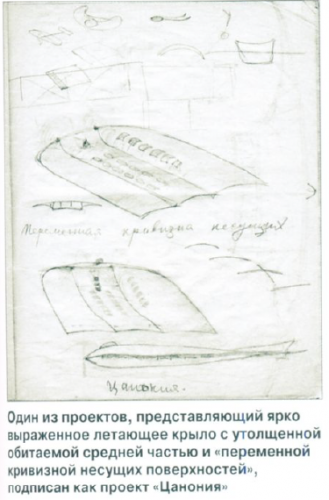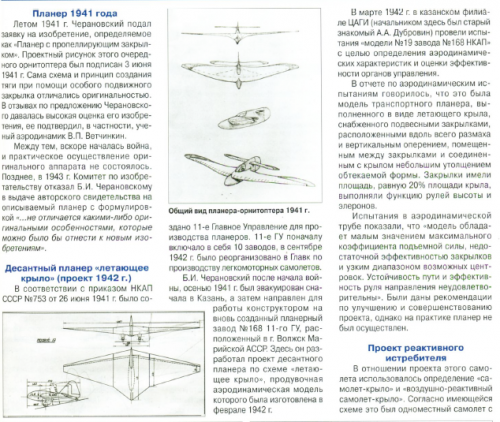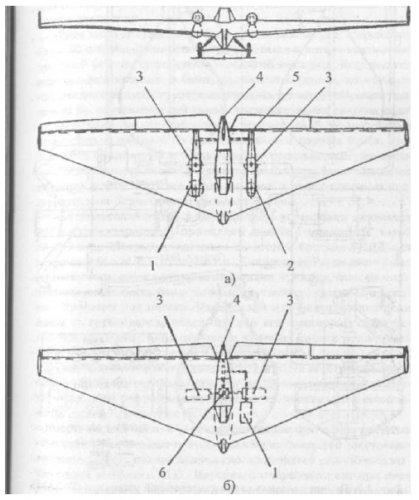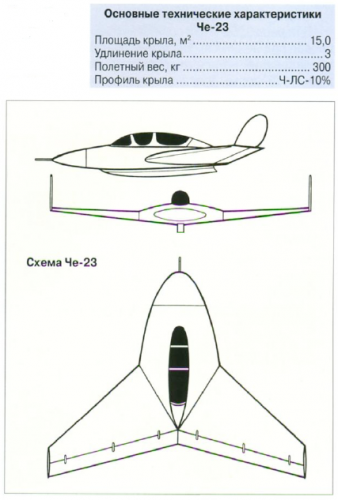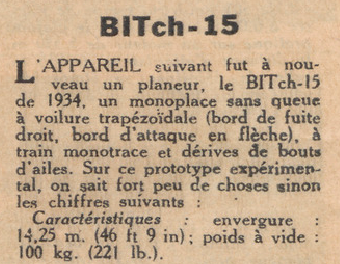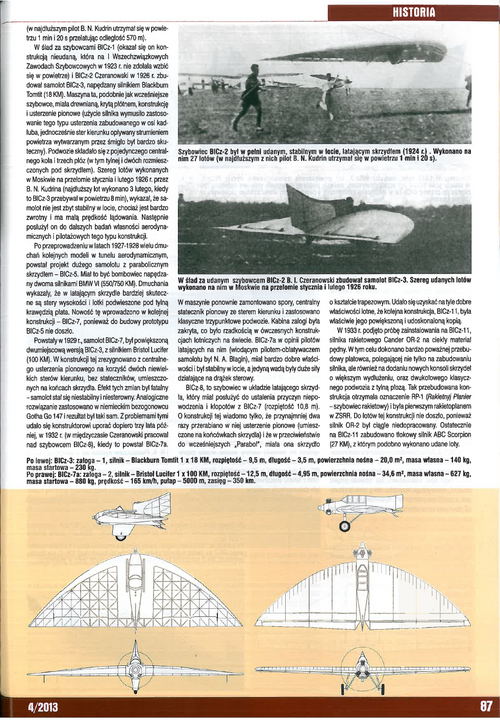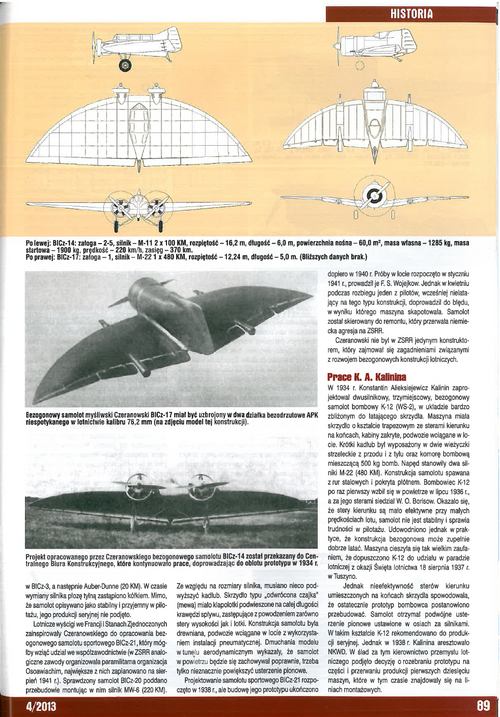Aside from the well-documented BICh- series, there is a handful of undesignated designs also related to Cheranovsky. Here are the ones that I know of (if any of these is not Cheranovsky's and I've made a mistake, please let me know!):
Fake Delta Night Fighter
On April 16, 1947, the NCAP ordered to the OKB-153 (Antonov) the design of a flying wing fighter powered by two RD-10 turbojets under the codename “Project M”.
The RD-10 only had 900 kg static thrust and the designers understood that with that power it would be difficult to compete with the latest Western designs Northrop XP-79B and de Havilland DH-108.
To achieve high speeds, it was necessary to use a delta wing with 55-degree swept (at leading edge).
This aerodynamic solution was considered something very extreme at that time and it was feared that the aircraft had a dangerous behavior during landing, to improve its stability at low speeds it was decided to install two wingtip extensions with 17-degree forward swept.
When the first Soviet copies of the British centrifugal turbojet Nene became available, in late 1947, Antonov was instructed to modify the "Project M" replacing the two RD-10 turbojets with an indigenous RD-45, with 2,230 kg thrust. This allowed to reduce the wing swept up to 53-degree and eliminate the wing tips.
The final design of 1948, named
Masha, had triangular air intakes mounted in the wing roots and semicircular tailfins very similar to those of the night fighter project proposed by Siegfried Günter that same year.
To test the concept, the glider E-153 was built, which made its first flight in July 1948, but the
Masha was unexpectedly cancelled due to the urgent need of
Nene engines for the manufacture of the MiG-15 fighters.
Antonov Project M (1947) technical data
Wingspan: 35.4 ft. (10.8 m), length: 34.8 ft. (10.6 m), height: 10.9 ft. (3.3 m), power plant: two RD-10 axial-flow turbojets rated at 900 kg static thrust each, proposed armament: 2x23 mm and 2x37 mm cannon.
Antonov Project M (1948) technical data
Wingspan: 30.5 ft. (9.3 m), length: 35 ft. (10.64 m), height: 12.3 ft. (3.75 m), power plant: one RD-45 centrifugal-flow turbojet rated at 2,230 kg static thrust, estimated climb rate: 3,280 ft/min, estimated ceiling: 32,810 ft. (10,000 m), estimated range: 385 miles (620 km), proposed armament: 2x23 mm and 2x37 mm cannon.
The possibility that the Soviets had developed a supersonic fighter in 1949 was of great concern to the Western intelligence services, which ignored the anti-flying wings policy developed by the Soviet government since 1938.
The “Project M” was highly classified, but some information is filtered to the Western press.
In February 1954 the
Flying magazine published the cutaway of a Russian all-weather delta fighter similar to the German project Arado E 583 (January 27, 1945) but fitted with triangular air intakes at the wing roots. A structural solution that had already been used a year earlier by the British in the Avro 707A prototype.
On June 6, 1955,
LIFE published a drawing based on the
Flying cutaway with the text: “Flying Wing Night Fighter has been seen on the ground and zooming over Moscow. Twin jet engines fed by curved air intakes drive tailless plane at close to the speed of sound and permit rapid climbing for interception of bombers. Unlike planes with standard tail and wings, horizontal control surfaces are in trailing edge of flying wing. Vertical stabilizers are mounted near wing tips. Design has been credited to Cheranovski, one Russia’s best aviation engineers”.
Other similar illustrations were published in
Popular Mechanics (July 1955) with the text: “MiG-18, a Soviet twin-engine supersonic interceptor, armed with three 20 mm guns, developed as a basis of captured German technology” and
Ali Nuove (February 1956).
In 1998
Schiffer published the book "Secret Aircraft Designs of the Third Reich", according to author David Myhra the cutaway published in
Flying, was a night fighter project designed by Dr. Ing. Siegfried Günter in 1948. It was probably a perfected version of the Heinkel P-1079B project also designed by Günter in 1945.













